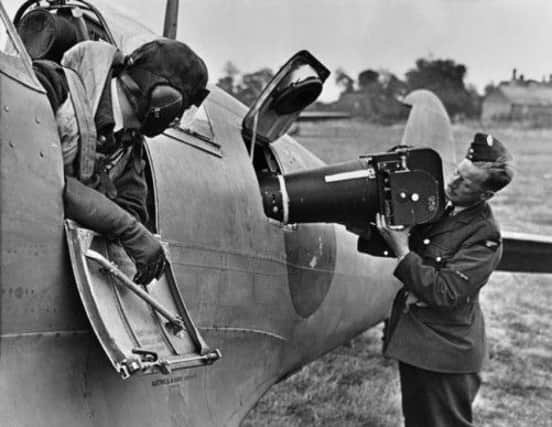Secret snapshots that exposed Hitler’s WMDs


Now, an author has detailed the extraordinary story of how aircrews from RAF Leuchars helped to undermine Germany’s attempts to lay siege to Britain with an armoury of “miracle” weapons.
A new book, based on declassified photographs taken by Allied reconnaissance aircraft, reveals how a long-disbanded intelligence unit was able to cut short the devastating German campaign of V-1 bomb attacks.
Advertisement
Hide AdAdvertisement
Hide AdThe advanced technology used in the weaponry – known by Londoners as Doodlebugs – claimed the lives of thousands during the conflict, and would later be used by Nasa to propel the Apollo spacecraft to the Moon.
Described by Evelyn Waugh as an “impersonal plague” of “enormous, venomous insects”, the engine that powered the bombs gave off a distinctive buzzing sound, although they fell silent in the moments before they struck their target.
The Germans hoped that the pioneering weaponry of the V-1 and V-2 bombs, devised by Dr Wernher von Braun and his team, would help turn the tide of the war in their favour.
However, the new book, Operation Crossbow, reveals how the arduous analysis of aerial photography helped pinpoint where the bombs were being launched from, allowing Allied forces to target them.
The once top secret photographs are held at Edinburgh’s National Collection of Aerial Photography, part of the Royal Commission on the Ancient and Historical Monuments of Scotland.
The book’s author, Allan Williams, is curator of the archive. He said: “The imagery that survives in the collection relating to Operation Crossbow reveals the extent of the search for test and launch sites – which involved taking over 1.2 million aerial photographs – and the great efforts made by the Germans to camouflage the sites.”
During the war, tens of millions of aerial photographs were taken by allied reconnaissance aircraft, with the images pored over by the Allied Central Interpretation Unit at RAF Medmenham in Buckinghamshire. At Medmenham’s peak in 1944, nearly 2,000 people were dedicated to the interpretation of aerial photography, providing vital intelligence to front-line commanders in all the European theatres of war.
• Operation Crossbow is being released to coincide with the 50th anniversary of the earliest parts of the photographic collection first being declassified. Priced £14.99, it is published by Preface Publishing.